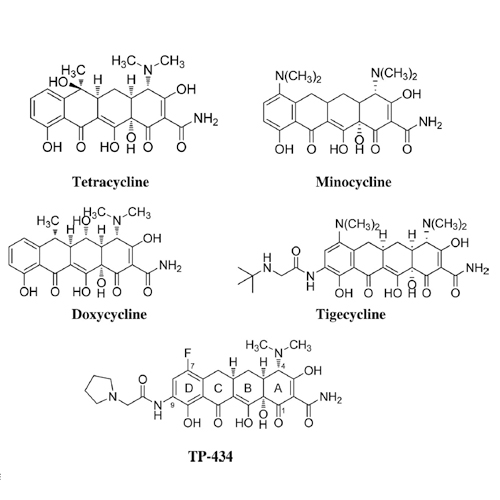Target- and Resistance-Based Mechanistic Studies with TP-434, a Novel Fluorocycline Antibiotic
21-Feb-2012
Antimicrobial Agents and Chemotherapy, 2012, doi:10.1128/AAC.06187-11, May 2012 vol. 56 no. 5 2559-2564 published on 21.02.2012
TP-434 is a novel, broad-spectrum fluorocycline antibiotic with activity against bacteria expressing major antibiotic resistance mechanisms, including tetracycline-specific efflux and ribosomal protection. The mechanism of action of TP-434 was assessed using both cell-based and in vitro assays. In Escherichia coli cells expressing recombinant tetracycline resistance genes, the MIC of TP-434 (0.063 μg/ml) was unaffected by tet(M), tet(K), and tet(B) and increased to 0.25 and 4 μg/ml in the presence of tet(A) and tet(X), respectively. Tetracycline, in contrast, was significantly less potent (MIC ≥ 128 μg/ml) against E. coli cells when any of these resistance mechanisms were present. TP-434 showed potent inhibition in E. coli in vitro transcription/translation (50% inhibitory concentration [IC50] = 0.29 ± 0.09 μg/ml) and [3H]tetracycline ribosome-binding competition (IC50 = 0.22 ± 0.07 μM) assays. The antibacterial potencies of TP-434 and all other tetracycline class antibiotics tested were reduced by 4- to 16-fold, compared to that of the wild-type control strain, against Propionibacterium acnes strains carrying a 16S rRNA mutation, G1058C, a modification that changes the conformation of the primary binding site of tetracycline in the ribosome. Taken together, the findings support the idea that TP-434, like other tetracyclines, binds the ribosome and inhibits protein synthesis and that this activity is largely unaffected by the common tetracycline resistance mechanisms.











